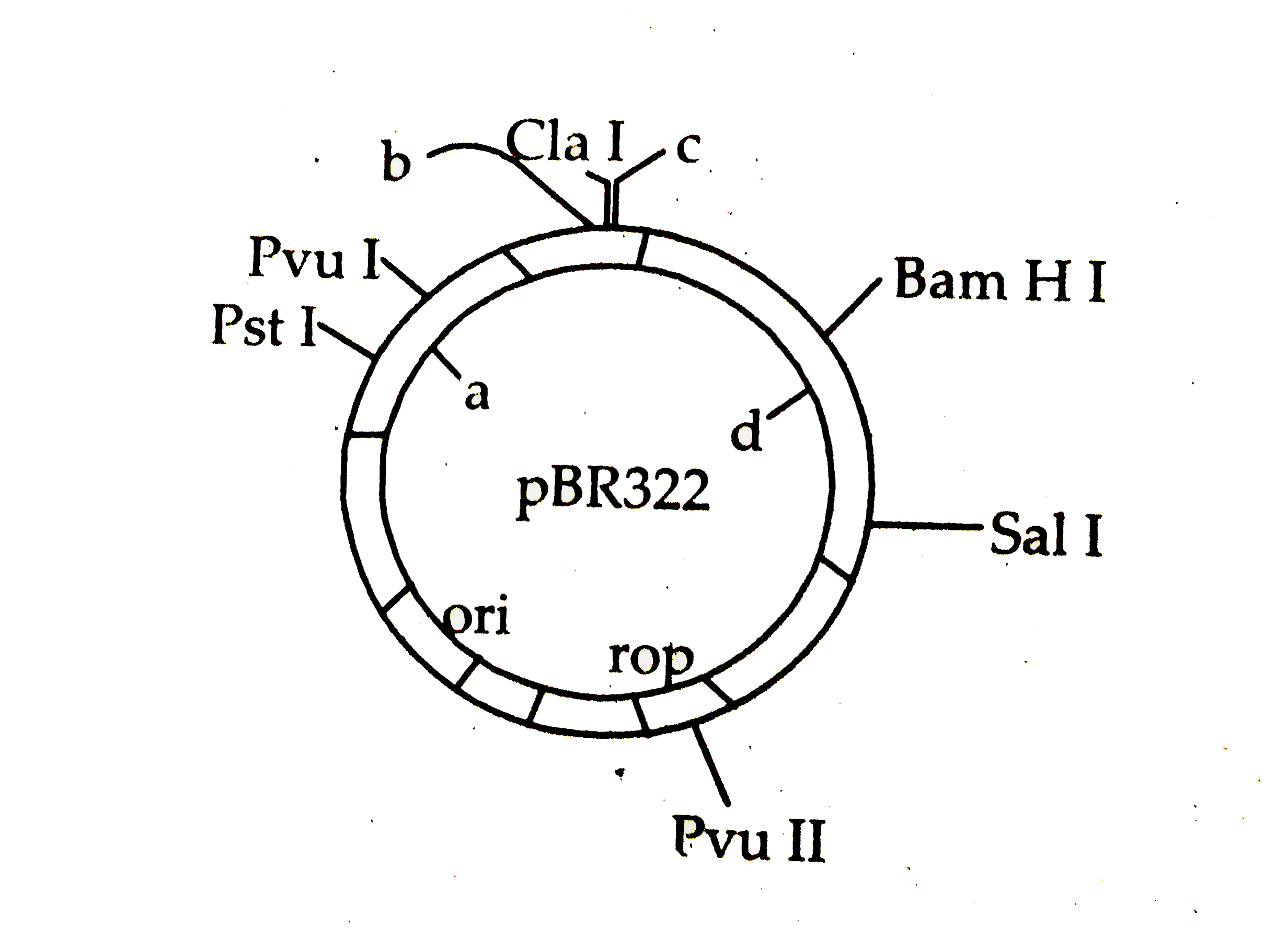How does β-galactosidase coding sequence act as a selectable marker ? Why is it a preferred selectable marker to antibiotic resistance genes ? Explain.
Step-by-Step Solution:
1. Understanding Selectable Markers:
- Selectable markers are genes introduced into a cell that allow for the identification of cells that have successfully taken up foreign DNA (recombinant DNA). They help in distinguishing between transformed (successful) and non-transformed (unsuccessful) cells.
2. Role of Beta-Galactosidase:
- Beta-galactosidase is an enzyme that can be encoded by a gene present in a plasmid. In the context of recombinant DNA technology, this enzyme is used as a selectable marker.
- When the plasmid containing the beta-galactosidase gene is transformed into bacterial cells, the enzyme is produced. If the plasmid has not taken up foreign DNA, the enzyme remains functional, and the bacterial colonies will produce a blue color when grown on a medium containing X-gal (a substrate for beta-galactosidase).
3. Insertional Inactivation:
- If foreign DNA is inserted into the beta-galactosidase gene within the plasmid, it leads to the inactivation of the enzyme. This process is known as insertional inactivation.
- As a result, the colonies that contain the recombinant plasmid (with the foreign DNA) will remain colorless when grown on X-gal medium, whereas the colonies with the non-recombinant plasmid will turn blue.
4. Advantages Over Antibiotic Resistance Genes:
- Using beta-galactosidase as a selectable marker is preferred over antibiotic resistance genes for several reasons:
- Simplicity: The process of using beta-galactosidase allows for a straightforward visual identification of successful transformants without the need for antibiotics.
- Reduced Complexity: With antibiotic resistance markers, one must simultaneously grow the bacteria on antibiotic-containing media, which can complicate the procedure and requires careful handling of antibiotics.
- Cost-Effectiveness: Using colorimetric assays (like the blue/white screening with beta-galactosidase) is often less expensive than maintaining antibiotic stocks and performing antibiotic susceptibility tests.
5. Conclusion:
- Beta-galactosidase serves as an effective selectable marker in recombinant DNA technology due to its ability to provide a clear visual cue for successful transformation, while also simplifying the process compared to antibiotic resistance markers.
- Selectable markers are genes introduced into a cell that allow for the identification of cells that have successfully taken up foreign DNA (recombinant DNA). They help in distinguishing between transformed (successful) and non-transformed (unsuccessful) cells.
- Beta-galactosidase is an enzyme that can be encoded by a gene present in a plasmid. In the context of recombinant DNA technology, this enzyme is used as a selectable marker.
- When the plasmid containing the beta-galactosidase gene is transformed into bacterial cells, the enzyme is produced. If the plasmid has not taken up foreign DNA, the enzyme remains functional, and the bacterial colonies will produce a blue color when grown on a medium containing X-gal (a substrate for beta-galactosidase).
- If foreign DNA is inserted into the beta-galactosidase gene within the plasmid, it leads to the inactivation of the enzyme. This process is known as insertional inactivation.
- As a result, the colonies that contain the recombinant plasmid (with the foreign DNA) will remain colorless when grown on X-gal medium, whereas the colonies with the non-recombinant plasmid will turn blue.
- Using beta-galactosidase as a selectable marker is preferred over antibiotic resistance genes for several reasons:
- Simplicity: The process of using beta-galactosidase allows for a straightforward visual identification of successful transformants without the need for antibiotics.
- Reduced Complexity: With antibiotic resistance markers, one must simultaneously grow the bacteria on antibiotic-containing media, which can complicate the procedure and requires careful handling of antibiotics.
- Cost-Effectiveness: Using colorimetric assays (like the blue/white screening with beta-galactosidase) is often less expensive than maintaining antibiotic stocks and performing antibiotic susceptibility tests.
- Beta-galactosidase serves as an effective selectable marker in recombinant DNA technology due to its ability to provide a clear visual cue for successful transformation, while also simplifying the process compared to antibiotic resistance markers.
Similar Questions
Why is it essential to have a ' selectable marker' in a cloning vector
View Solution(a) Name the selectable markers in the cloning vector pBR322 ? Mention the role they play.
(b) Why is the coding sequence of an enzyme b-galactosidase a preferred selectable marker in comparison to the ones named above ?
View SolutionGenes for which of the following can serve as selectable marker ?
View SolutionWhich of the following is the first artificial cloning vector that has two selectable markers—tetracycline (tetR) and antibiotic restriction enzymes (ampR)?
View SolutionHow is insertional inactivation of an enzyme used as a selectable marker to differentiate recombinants from non-recombinants?
View SolutionIn cloning vector pBR322, the Barn HI cloning site is found in which selectable marker gene?
View SolutionRead the following statements and select the correct option.
(I) E.coli cloning vector pBR322 have several restriction sites , ori , antibiotic resistance genes and rop.
(II) Competent bacterial cells cannot take up foreign DNA.
(III) In elution ,the separated bands of DNA are cut out from agarose gel and extracted from the gel piece.
(IV) The downstream processing and quality control testing vary from product to product .
View Solution
(a) Identify the selectable markers in the diagram of E. Coli vectior shown above .
( b) How is the coding squence of α- galactosidase consider a better markers than the ones identified by you in the diagram ? Explain.
View SolutionA plasmid without a selectable marker was chosen as vector for cloning a gene. How does this affect the experiment?
View SolutionA plasmid without a selectable marker was chosen as vector for cloning a gene. How does this affect the experiment?
View Solution
